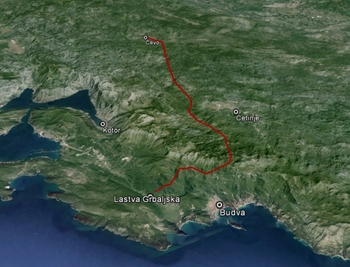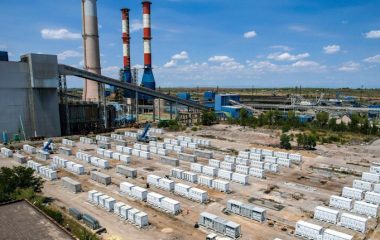
Photo: CGES
Montenegro has finished laying its part of the underwater power cable with Italy. The operation ended near the cape of Jaz, where a substation is being built. Montenegro is set to become a regional hub for transfer of electricity between Western Europe and Western Balkans, once the entire project is finished in 2018.
The laying of the 157-kilometre-long section of the cable had started on November 20, and was finished on December 3, ahead of the schedule , according to report from daily Pobjeda, which cited the sources in the Italian company Terna S.p.A. The 136-kilometre-long section of the cable closer to Italy was installed earlier in 2015. The laying of the central part of the cable at the bed of the southern Adriatic Sea is scheduled for January 2017. The total length of the cable, which is planned to connect the facilities in the Italian city of Pescara and the Montenegrin Lastva Grbaljska village, is 455 kilometres.
Back in October, the Montenegrin transmission system operator (TSO) started works with the on-shore part of the cabling, in order to bypass Cape Jaz entry point on the way to the substation in Lastva Grbaljska. The works on substation “Lastva” and the 400 kV power line connecting Lastva, Čevo and Pljevlja are also in progress. The TSO, Montenegrin Power Transmission System (Crnogorski elektroprenosni sistem AD – CGES), said the substation investment is worth EUR 38.5 million, while the expenses for the Lastva-Čevo-Pljevlja power line are estimated at EUR 39 million.
The Montenegro-Italy Interconnection Project is expected to be finished by early 2018, with the cable’s nominal capacity of 1,000 megawatts (MW). The special cable-laying boat “Skagerrak” from the Norwegian branch of Nexans performed the task of putting the cable on the Adriatic seabed, along with an optic telecommunications cable.
Authorities in Montenegro say that transmission of the electricity would provide CGES with a decent income, based on the 20% stake in the power cable capacity. The cable is a part of the Trans-Balkans Corridor which will connect Montenegro and other countries of the Western Balkan (Bosnia and Herzegovina, Serbia) with the Western Europe via Italy.


















Be the first one to comment on this article.